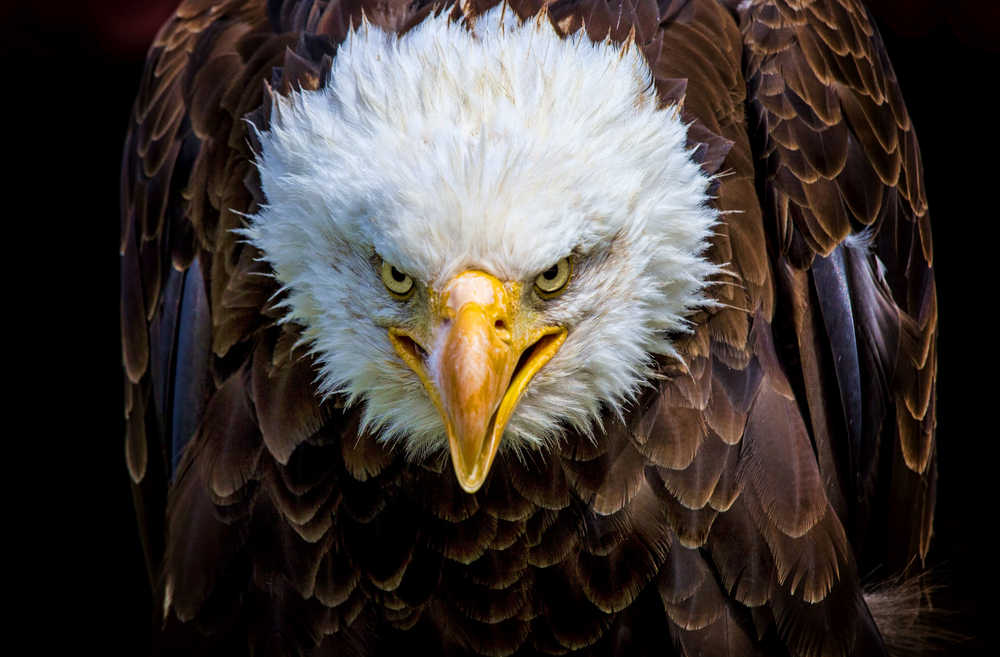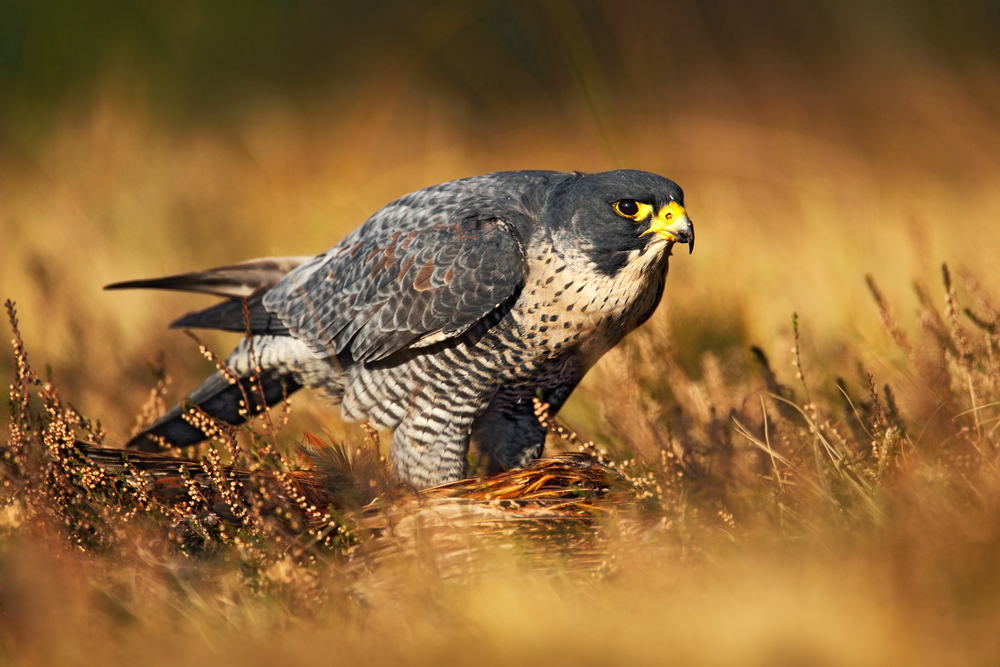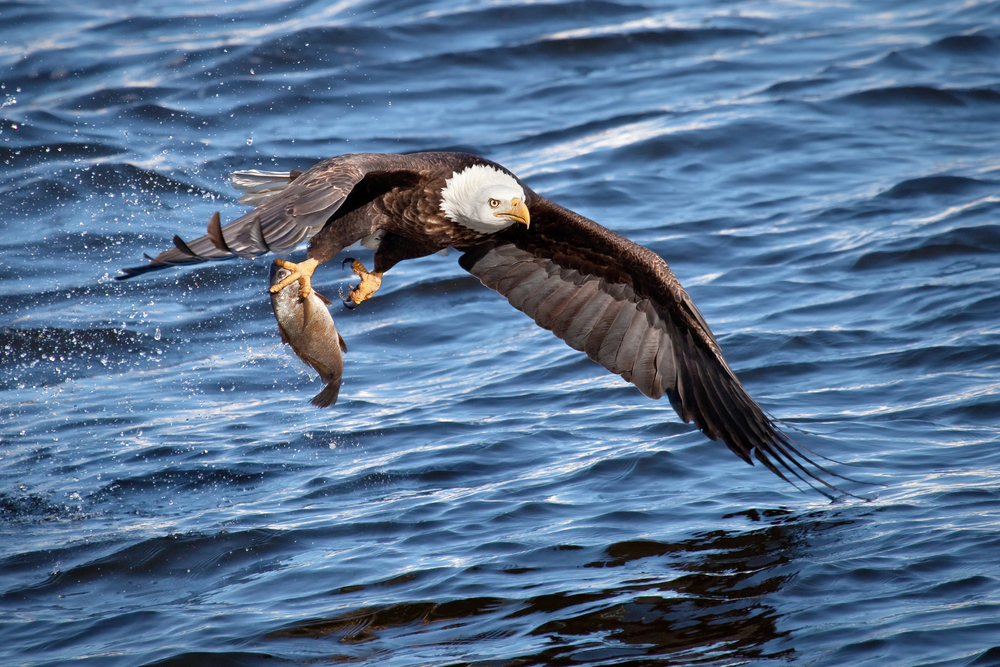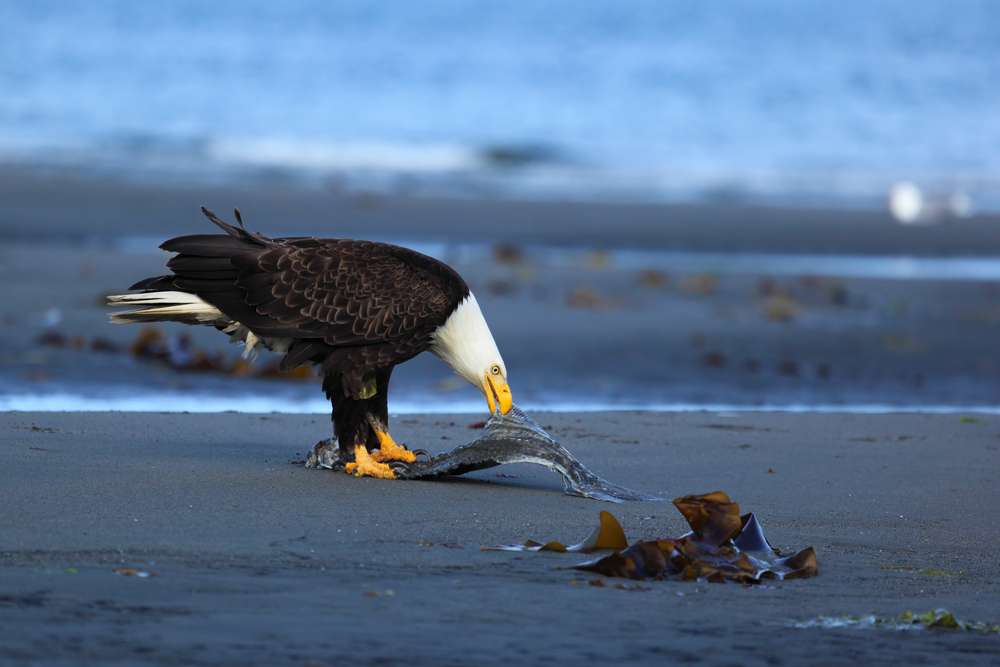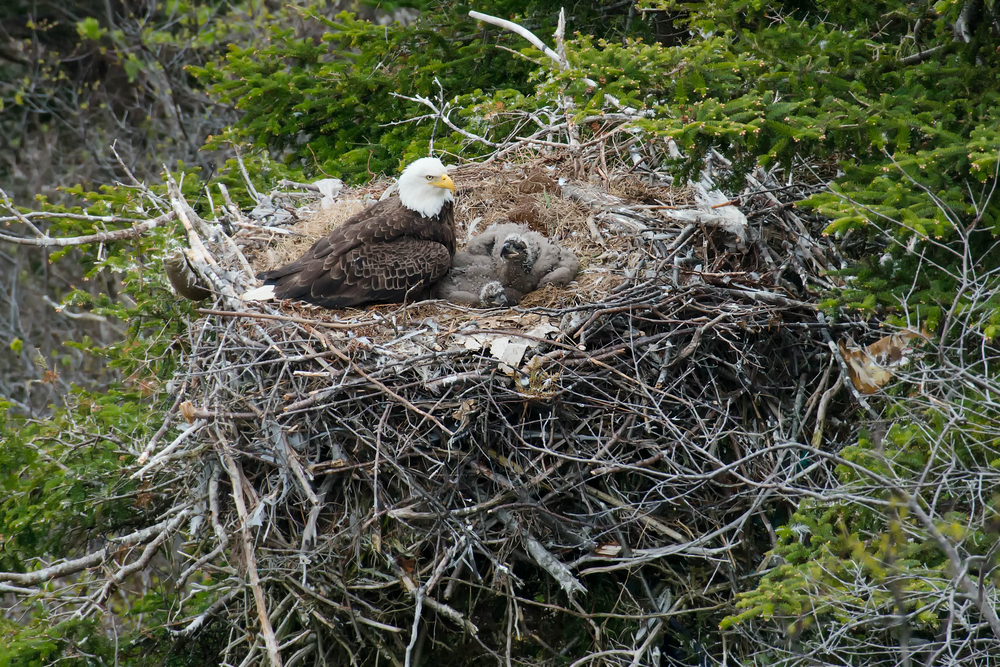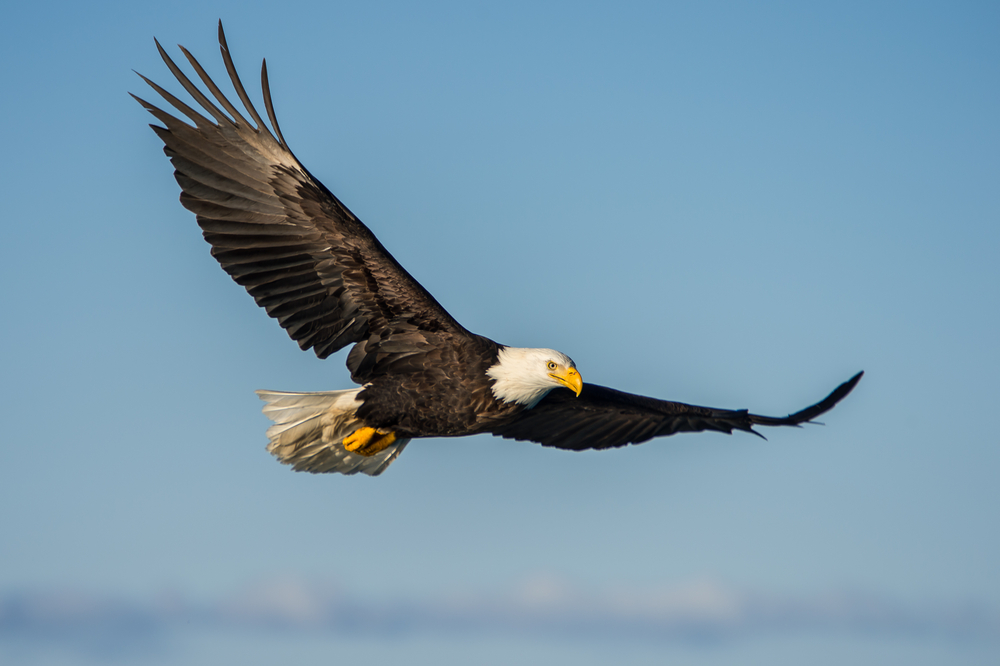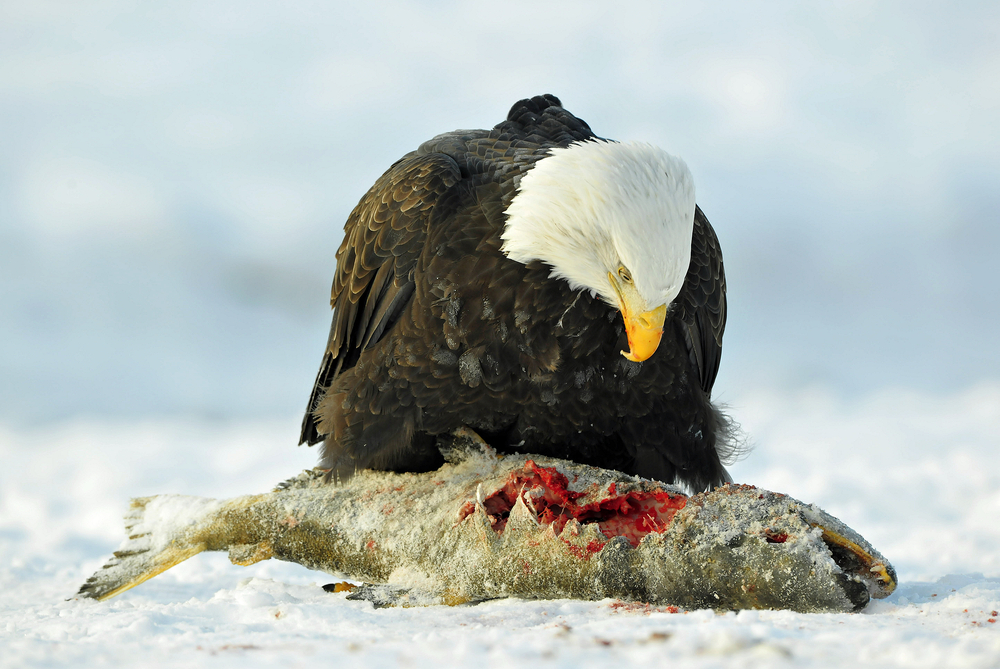The bird most similar to the Bald Eagle is the Golden Eagle (Aquila chrysaetos). Both the Bald and Golden Eagles share several characteristics and belong to the same family, Accipitridae, which includes hawks, kites, and other birds of prey. Here are some similarities and distinctions between them:
- Size and Build: Both eagles are large birds of prey with powerful builds. The Golden Eagle is slightly smaller than the Bald Eagle, but they share a similar wingspan and overall body size.
- Hunting and Diet: Like the Bald Eagle, the Golden Eagle is a skilled hunter. While the Bald Eagle primarily feeds on fish, the Golden Eagle has a more varied diet, including mammals like rabbits and hares, as well as birds and carrion.
- Habitat: Both species inhabit North America, but their preferred habitats differ slightly. Bald Eagles are commonly found near water bodies, as fish is their primary food source, while Golden Eagles are more adaptable to various habitats, including mountains, cliffs, open country, and areas with sparse vegetation.
- Nesting: Both eagles build large nests, often in high places like cliffs or tall trees. They are known to use and add to the same nest for many years.
- Flight Characteristics: Both have impressive flight capabilities, with the Bald Eagle excelling in soaring and gliding, especially over water, and the Golden Eagle demonstrating remarkable agility and speed over land.
- Appearance: The most noticeable difference is in their appearance. Adult Bald Eagles have a distinctive white head and tail, contrasting with their dark body. In contrast, Golden Eagles have a uniform dark brown plumage with golden feathers on their nape.
Both the Bald and Golden Eagles are admired for their strength, majesty, and skill as predators, playing significant roles in their respective ecosystems.





































































